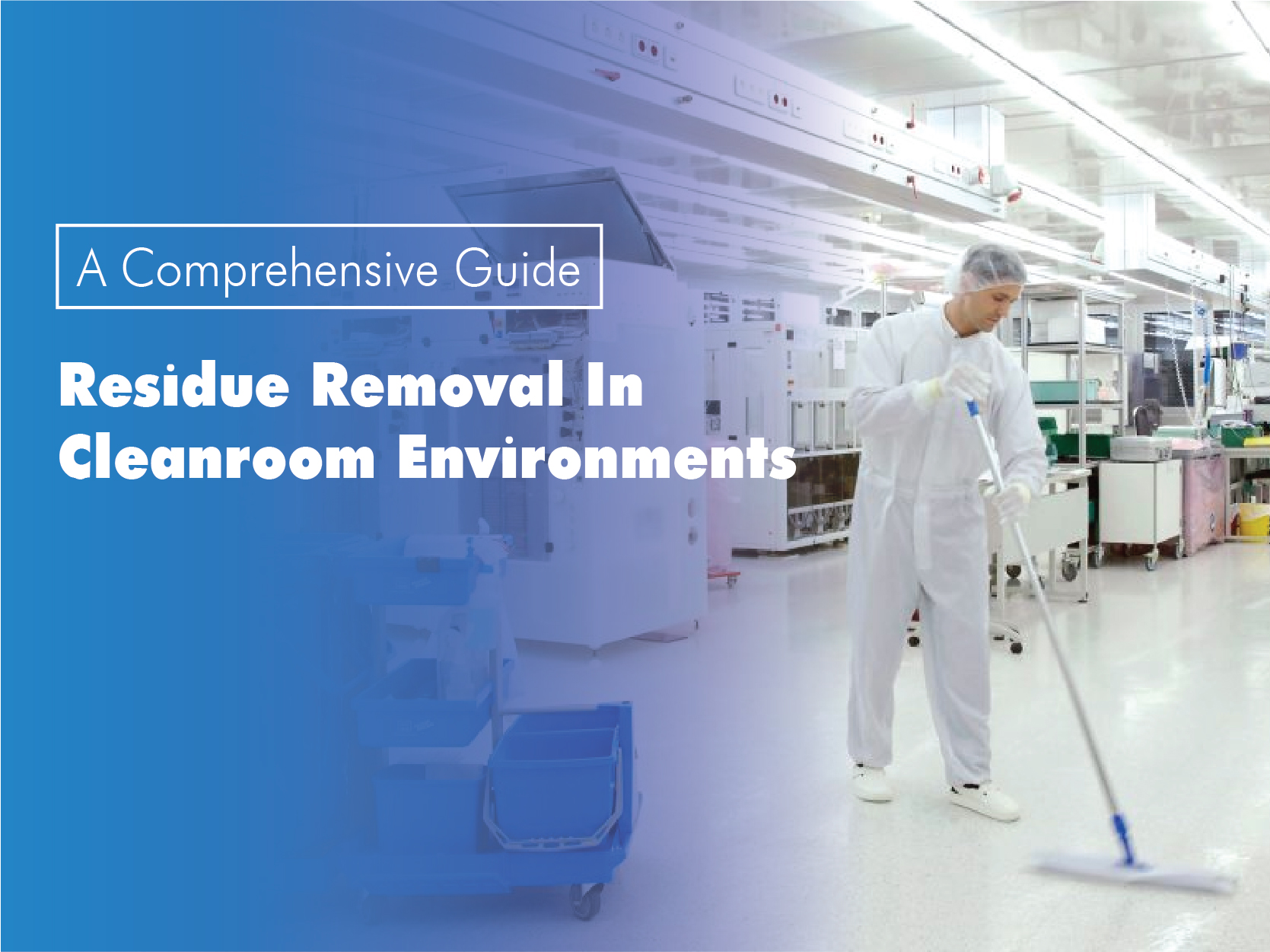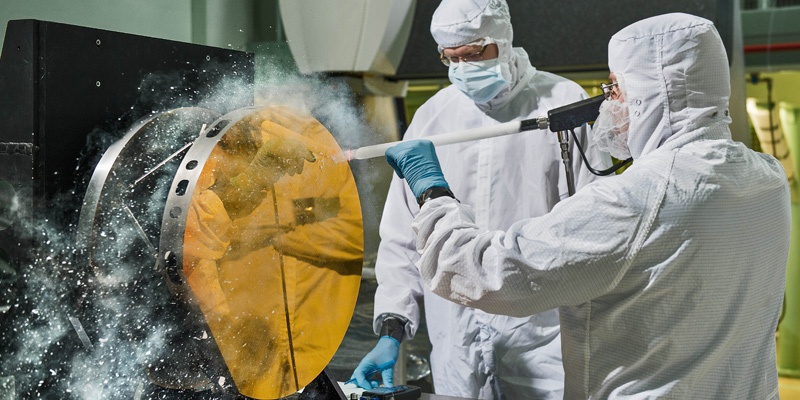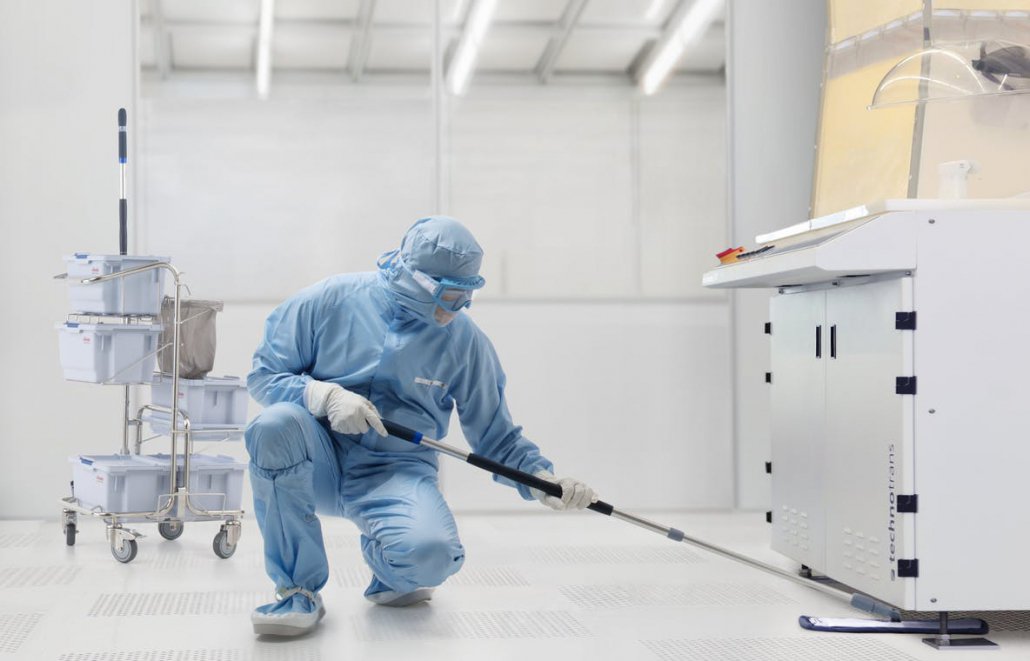A Comprehensive Guide to Residue Removal in Cleanroom Environments

Cleanrooms are critical environments used in various industries such as pharmaceuticals, biotechnology, electronics, and medical devices manufacturing. These environments require strict control of airborne particulate and microbiological contamination to prevent product contamination or yield loss. One critical aspect of maintaining the cleanliness of a cleanroom is the removal of residues.
Residues are particles or substances left behind on surfaces or in the air by people, equipment, or processes. These residues can include skin flakes, hair, fibers, dust, microbes, oils, solvents, and chemicals. The presence of residues can compromise the cleanliness and sterility of a cleanroom and contaminate products.
Regulatory agencies such as the US Food and Drug Administration (FDA), the European Medicines Agency (EMA), and the International Organization for Standardization (ISO) have established guidelines and standards for the control of residues in cleanrooms.
The FDA's Current Good Manufacturing Practice (CGMP) regulations require that pharmaceutical manufacturers ensure that equipment and utensils are cleaned, maintained, and sanitized to prevent contamination of drug products. The FDA's guidance on sterile drug products states that cleanrooms and associated controlled environments should be monitored for particles and microbiological contamination and that cleaning and disinfecting procedures should be established and followed.
The EMA's Good Manufacturing Practice (GMP) guidelines require that manufacturing areas be designed and operated to minimize the risk of contamination, including the control of residues. The EMA's Annex 1 on sterile medicinal products specifies the limits for airborne particles and microbiological contamination in cleanrooms and the need for cleaning and disinfection procedures.
The ISO has established standards for cleanroom environments, including ISO 14644-1 for classification of air cleanliness and ISO 14644-2 for monitoring and testing of cleanrooms. ISO 14644-5 provides guidance on the selection of cleaning agents, methods, and equipment for cleanrooms.

Regulations for residue removal
The extracts below show that adequate cleaning and disinfection can only be ensured if the premises’ layout, flows, equipment and material design are chosen to minimise the risk of cross-contamination and build-up of residues:
a. EudraLex - Volume 4 - Good Manufacturing Practice (GMP) guidelines
(Note that the PI009-14 GMP guideline is equivalent in some regards to the Eudralex Volume 4 requirements)
• a.1. Annex 1, Manufacture of Sterile Medicinal Products, 2008:
• 46. In clean areas, all exposed surfaces should be smooth, impervious and unbroken in order to minimise the shedding or accumulation of particles or microorganisms and to permit the repeated application of cleaning agents, and disinfectants where used.
• 47. To reduce accumulation of dust and to facilitate cleaning there should be no uncleanable recesses and a minimum of projecting ledges, shelves, cupboards and equipment.
• a.2. Annex 1, Manufacture of Sterile Medicinal Products, draft 2017: (Note that article 5.4 of the draft guideline is the same as article 46 of Annex 1).
• “5.31…Cleaning programs should be effective in the removal of disinfectant residues.”
• a.3. Part IV, Guidelines on Good Manufacturing Practice specific to Advanced Therapy Medicinal Products (ATMP), 2018: (Note that article 4.31 of the ATMP guideline is the same wording as article 46 of Annex 1).
• 4.42. Appropriate cleaning/sanitation of clean areas is essential, including the removal of residual cleaning agents/disinfectants.
• a.4. Part I, Chapter 3, Premise and Equipment, 2015: “… Their layout and design must aim to minimise the risk of errors and permit effective cleaning and maintenance in order to avoid cross-contamination, build-up of dust or dirt and, in general, any adverse effect on the quality of products”.
b. FDA, Sterile Drug Products Produced by Aseptic Processing - Current Good Manufacturing Practice, 2004
• “Cleanrooms are normally designed as functional units with specific purposes. The materials of construction of cleanrooms ensure ease of cleaning and sanitising.”
c. WHO Technical Report Series
• c.1. No. 986, 2014, Annex 2: (Note that the article 12.2 is equivalent to the extract referred in the EU GMP Chapter 3)
• “12.2 The layout and design of premises must aim to minimise the risk of errors and permit effective cleaning and maintenance in order to avoid cross-contamination, build-up of dust or dirt, and in general, any adverse effect on the quality.”
• c.2. No. 961, 2011, Annex 6: (Note that the article 11.2 is equivalent to article 46 of the EU GMP Annex 1).
• “3.1 … Interactions between different cleaning materials should be validated. Appropriate cleaning validation should be carried out to ensure disinfectant residuals can be detected and are removed by the cleaning process.”
d. Canada, GUI-0001 - Good manufacturing practices guide for drug products, 2018
• “The premises in which a lot or batch of a drug is fabricated, packaged/labelled or stored shall be designed, constructed and maintained in a manner that permits the operations therein to be performed under clean, (a) sanitary and orderly conditions; permits the effective cleaning of all surfaces therein; and (b) prevents the contamination of the drug and the addition of (c) extraneous material to the drug.”
e. Japan - Guidance on the Manufacture of Sterile Pharmaceutical Products by Aseptic Processing
• “The disinfection of the manufacturing environment should not proceed prior to cleaning, as a rule. If there are any locations in the environment where cleaning agents may reside after cleaning, the cleaning agents should be verified not to impair the efficiency of disinfectants.”
f. ANVISA Resolution, Technical Regulation of Good Manufacturing Practices of Drugs – RDC n.17, 2010
• “Article 402. In clean areas, all exposed surfaces shall be smooth, impervious, to minimise the accumulation or release of particles or microorganisms, allowing the repeated application of cleaning agents and disinfectants, where appropriate.”
Based on these regulations, residue build-up comes from various sources that may impair the efficacy of cleaning and disinfection procedures. Effective cleaning and disinfection prevents unacceptable levels of viable (e.g. microbial) or non-viable (e.g. particle, residue) contamination.

A residue removal program for cleanrooms typically involves the following steps:
1. Identify the type of residue: Before selecting a cleaning agent, it is important to identify the type of residue that needs to be removed. Residues can be organic or inorganic, and may include dust, oil, fingerprints, or other types of contaminants.
2. Select an appropriate cleaning agent: Based on the type of residue, select a cleaning agent that is appropriate for use in cleanroom environments. The cleaning agent should be non-toxic, non-corrosive, and compatible with the surfaces being cleaned.
3. Establish cleaning procedures: Develop procedures for cleaning surfaces within the cleanroom. These procedures should include information on the frequency of cleaning, the cleaning agent to be used, the method of application, and any special precautions that need to be taken.
4. Train personnel: Train personnel on the cleaning procedures and ensure that they understand the importance of following the procedures.
5. Monitor cleaning effectiveness: Regularly monitor the effectiveness of the cleaning program to ensure that the cleanroom remains within the required cleanliness level. This can be done through visual inspections, particle counts, or other monitoring methods.
6. Document cleaning activities: Keep detailed records of all cleaning activities, including the date and time of cleaning, the cleaning agent used, and any observations or issues that were noted.
By following these steps, you can develop a comprehensive residue removal program for your cleanroom that helps maintain a clean and sterile environment.

Understanding the factors that generate residue is crucial as they vary widely in both origin and impact. Residue from many possible sources build up over time if adequate removal is not included in your programme.
Effective cleaning is required, but cleaning agents may leave residue on the surface too; hence a rinse step should also be included in your cleaning programme. The rinsing frequency should be adjusted based on the visibility of the residue your process and cleaning programme leave on the surface. Rinsing will typically require only water (WFI or PW) or 70% isopropanol to achieve visually clean surfaces.

